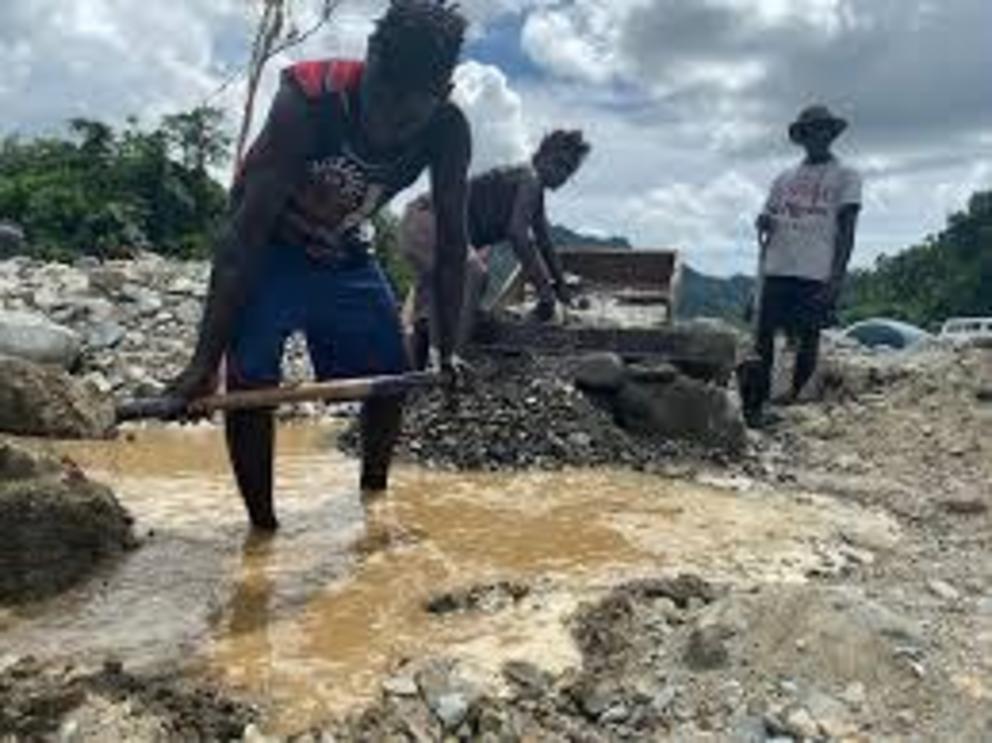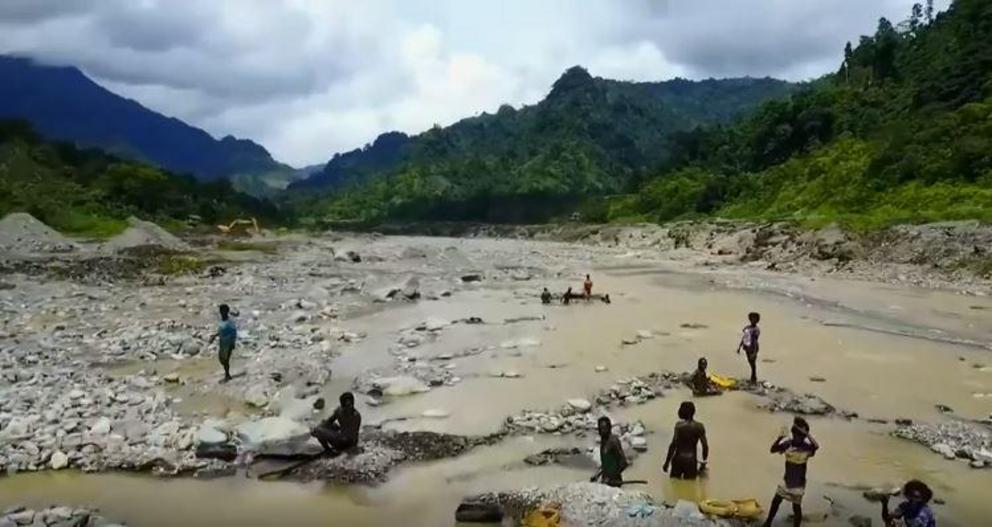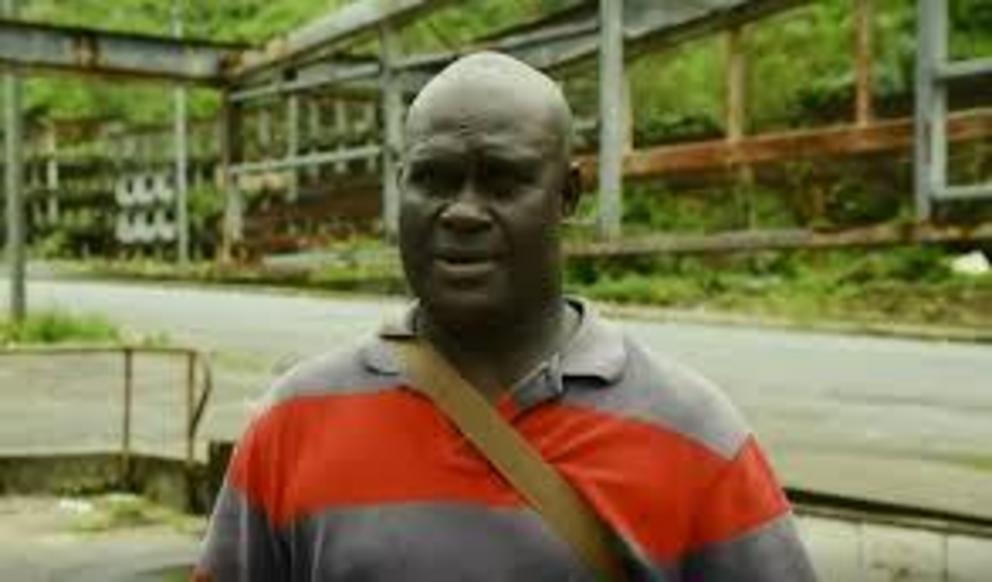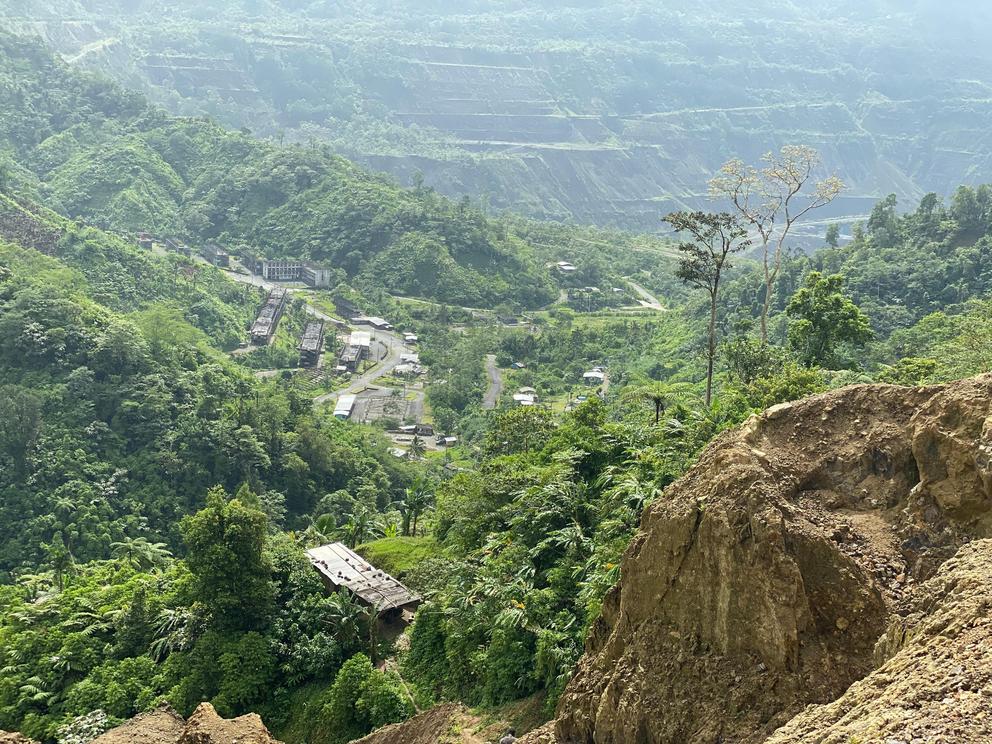Bougainville's gold mine sparked a war that killed 20,000 - now it could be reopened
The people of Bougainville will vote in a referendum this weekend that will decide on its independence from Papua New Guinea. Here, SBS News visits the mine that ignited its decade-long civil war.
Almost 20 years ago a brutal civil conflict ended in Papua New Guinea in which one in ten people on Bougainville died - but the war set the island on the road to independence.
The conflict was sparked by an Australian-run gold and copper mine, then the world’s largest. It had promised much but delivered very little for the local people.
The Panguna mine’s profits funded Papua New Guinea’s independence from Australia in 1975 and made Australian company Rio Tinto rich, but the Bougainville landowners saw little of the wealth and their rivers and lands were devastated by mining waste.
"What upset the landowners was Panguna mine,” said Sam Kauona, who as a general was the commander of the Bougainville Revolutionary Army, or BRA.
“Panguna mine was creating social disparities, environment problems, social issues and problems, unfair distribution of wealth by the company, that sparked off the sentiments, the desire for independence of Bougainville."
 Bougainville's rivers and lands were devastated by mining waste.
Bougainville's rivers and lands were devastated by mining waste.
The war started in 1989 when the impoverished people took up arms. The BRA was not highly thought of by outsiders but it shut down the mine and brought the local economy to its knees.
Over the next 10 years, during the ‘Bougainville crisis’, up to 20,000 people died either from fighting with the PNG defence force and its local collaborators or from disease and starvation.
Despite backing from the Australian government and Rio Tinto subsidiary Bougainville Copper Limited (BCL), the PNG government was brought to the negotiating table by the BRA and a peace agreement was signed in 2001.
"When I look at that, it was BRA that won the war,” Mr Kauona said.
“The point of defeat was when the PNG army didn’t have any strength any more, when we went for negotiations we came out with a stronger position, not in a loser position where we'd have to negotiate terms below what we have now."

The mining legacy has scarred the landscape as much as it has the people of Bougainville in PNG.
At the mine site, Moses Pipiro lives amid the mining facility ruins with about 500 traditional landowners in what until recently was still considered a no-go zone.
“We feel proud, we are happy, and also we are united now, [a] unified position now,” he said.
“But the people, they still cry. We fought to preserve our land and our environment, [and] the PNG defence force, they kill many people here.”
 Moses Pipiro lives amid the mining facility ruins.
Moses Pipiro lives amid the mining facility ruins.
About 200 of their weapons, a mix of homemade guns and captured defence force arms, are secured at the Panguna mine in preparation for the referendum.
“Okay these weapons are here, but the war is over, no more war in Bougainville, they are for monumentation but we have no money,” he said.
In the vast pit nearby, it is thought there is still $85 billion worth of copper and gold, enough to fund a fledgling independent state, but Panguna’s troubled past means the mine has an uncertain future.
The mine oozes blue polluted water and just downriver a devastated landscape unfolds where the tailings were pumped.
“It destroys everything, like fish, we used to catch fish here before,” said Barnabas Piruari, a downstream villager who blames his skin disease on the pollution.
Their livelihoods gone with the water and land spoilt, people scratch a living by panning for gold amid the mine waste and reopening the mine is not popular.
“Make some kind of different mining, not the one they’ve done before,” said Salithia Bitanuma, another downstream villager.
On the other side of the Crown Prince mountain range that runs the length of the island, there is a fire burning in the heart of Bougainville, no longer to wage war but to exploit their abundant resources.
Former combatant Jose Nouibiri smelts gold, a booming business in the former BCL mining town of Arawa, once the island’s capital.
“We were the first ones to establish this business, now some companies start up here, business is very good now but we have competition but we make 200 grams or 300 grams a day,” he said after melting down a customer’s gold dust.
The lump of gold is the result of weeks of backbreaking work by the villager in the tailings waste of the Panguna mine.
“During the crisis I was one of the fighters and helped the BRA,” Mr Noubiri said proudly.
“After the crisis I left Bougainville [for Port Moresby] to go find a job to support family and children get an education.”
Three decades ago Awara was a thriving town with a population of 12,000 people but was physically and economically destroyed after the world’s largest copper and gold mine was shut down.
A decade of civil war saw it burned to the ground and abandoned.
“That was here and also other parts of Arawa town, this was a battlefield,” said former mayor and peace broker Theresa Jaintong, reflecting on the war and running gun-battles on her street.
Twenty years of neglect under the 2001 peace agreement has left Arawa, like much of Bougainville, impoverished. There are few businesses and jobs, limited health and education services.
Ms Jaintong’s grandchildren are part of Arawa’s booming population and reopening the Panguna mine is seen by many as a controversial choice but a vital one for the economic future.
“They’re talking about the economic side of agriculture and fisheries but we cannot do it quickly because we have to turn it into cash, Panguna is readily available,” Ms Jaintong said.
With Bougainville expected to vote for independence this weekend, there is a new generation of leaders emerging with hopes for a return to the good times in Arawa.
“My vision for Arawa is it’s going to be the capital of the new Bougainville,” Arawa deputy mayor Genevieve Korokoro said.
Tens of millions in Australian infrastructure aid has rebuilt roads, schools and hospitals in the past decade.
More changes are coming to the town where it is sometimes impossible to get better than dial-up speed internet, a digital future.
“Oh yes, there’s a fibre optic cable coming in from Huawei China,” deputy mayor Korokoro said with a smile.
It will still be a long way from the golden days in Arawa.
Awaiting another customer, Mr Noubiri has changed his mind since he fought to shut down the Panguna mine.
“When we are independent we don’t need money from the outside, we use alluvial mining and pay tax to the government and give money to develop education and health and everything,” he said.
“I support the opening of the Panguna mine because it’s going to generate revenue for our government to stand up and look after our people.”
Up at the Panguna mine, Moses Pipiro is taking a more cautious approach.
"After the referendum, we shall see, if we talk about opening the Panguna mine, we create division again, because now we are focused on the unity on Bougainville," he said.
"If we try to talk about opening the mine, we create the other monster again"
Change may be coming to Bougainville but its future, like its past, will be determined by what’s in the ground.
The Bougainville independence referendum begins on Saturday.
For the rest of this article please go to source link below.
Video can be accessed at source link below.

